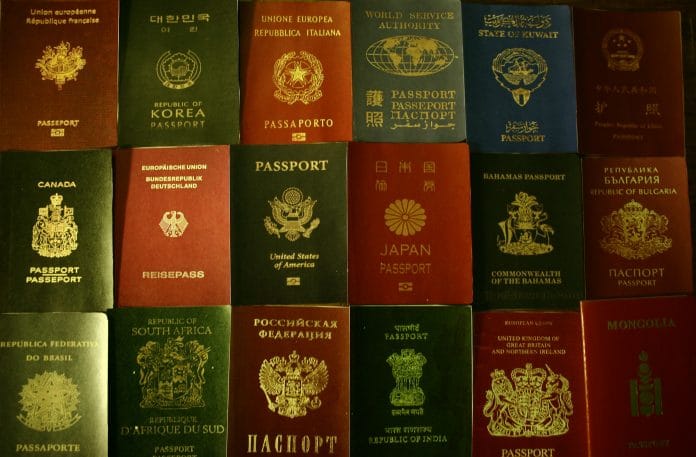A passport is a passport. Right? An official document issued by your government certifying the holder’s identity and citizenship and entitling them to travel under its protection to and from foreign countries.
For some, a passport is your gateway to the world. For others, it presents a barrier to the freedom they seek, states the Henley Passport Index — the only passport index based on data from the International Air Traffic Association (IATA).
But did you know not all passports are equal? Each year, the Henley Passport Index ranks the most powerful passports in the world. The site provides a listing of the 199 passports of the world according to the number of countries to which holders can travel visa-free.
In a tie for first place, two Asian countries top the list. Japan and Singapore’s passports top the rankings because both documents offer visa-free access to 190 countries each. South Korea, Germany and Finland finished second, with their passports being able to access 188 countries.
Where on the list did the USA come in? A sad 6th place with access to only 184 destinations.
Colour also plays an important role in passport cover choice. We’ve all taken a quick peek at fellow passengers’ passports as we wait in line at check in desks or immigration control? But did you know that passports come only in four colours, or hues of?
All passports are either red, blue, green or black and embossed with fancy gold lettering. There’s no set ruling or control on how different countries choose their colour but there does exist a geographical or political rationale for choosing certain colours.
Red or burgundy is the most common passport color and used by member countries of the European Union. Switzerland, although a member of the EU, uses a bright red passport to match their national flag. And, because of the imminent withdrawal from the European Union, the United Kingdom will revert to blue passports. Britons eager to start using a blue passport will have to wait until at least the end of the year, when the government will begin phasing them in but burgundy booklets will continue to be issued until early 2020 to use up stocks.
The colour blue is said to represent the “new world.” US passports are blue – although they were once green, From 1926 to 1941, US travellers were issued red passports, and from 1941 to 1976, green covers were used. The colour was changed to blue in 1976 as part of the Bicentennial celebrations — and from April 1993 to March 1994, in honor of Benjamin Franklin and the 200th anniversary of the US Consular Service. Caribbean countries and U.S. Territories, like Guam, Puerto Rico, American Samoa and the U.S. Virgin Islands issue blue passports along with many South American countries including Brazil, Argentina and Paraguay.
Islamic countries like Syria, Saudi Arabia, Iran, Afghanistan, Morocco and Pakistan choose green for their passport covers for religious purposes because it was allegedly the preferred colour of the Prophet Mohammad.
Nigeria, Niger and Segal also have green passports but, in their case, it’s because they belong to ECOWAS (the Economic Community of West African States).
Many Islamic countries choose green for religious purposes. It’s believed that the color was the favorite of the Prophet Muhammad, with green representing nature. This is why you’ll see the same colors on passports from Syria, Iran, Afghanistan and Morocco, among many others.
Besides blue and green, the other prominent colors of passports are red and black. Citizens of nations with a communist history like Slovenia, Serbia, Latvia, Romania, Russia, Poland, and Georgia use red passports. China issues a red diplomatic passport to government officials traveling abroad but China’s public passport for the general population has a black cover.
Black passport covers are the rarest and can be found in African countries, including Angola, Chad, Congo, Botswana, Zambia, Burundi, Gabon, and Malawi. New Zealand citizens also possess black passports because black is their national color. It may be that we can soon incorporate our identities on our smartphones — Mobile Passport Control (MPC). MPC already allows U.S. citizens and Canadian visitors to use the MPC app to expedite their entry process into the United States. … Much like Automated Passport Control (APC), the app does not require pre-approval and is free to use. MPC is available to U.S. citizens and Canadian visitors at 27 U.S. international airports, including Tampa (TIA).
I, myself, hold two passports — one burgundy and one blue. But for those of us who would like a pretty pink or yellow passport, we’ll have a long wait. It’s not considered dignified for such an important document.
Sue Quigley can be contacted at [email protected]. She lives in Tampa.

